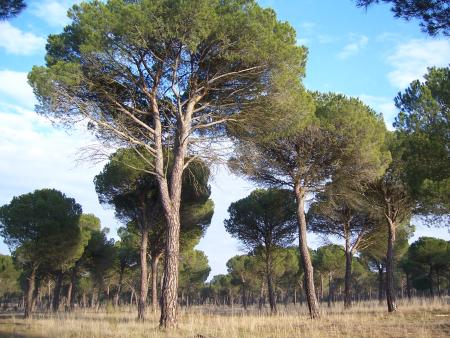
Objective:
Climate change is affecting the health and productivity of the Mediterranean stone pine (Pinus pinea) stands in the Spanish Northern Plateau. The main research lines for adapting this forest ecosystrems and mitigating the effect of climate change are presented. The finding should lead to recommendations for the future management of these stands.
Context:
The Mediterranean region is being severely affected by climate change. In the Spanish Northern Plateau, temperature has incremented by 1.5 ºC since 1990, with more heat waves, higher recurrence of persisting droughts, and less extreme frosts; annual rainfall is lower and more iregular. Climate projections predict a shift toward more aridity and heat. The current P. pinea stands in the Northern Plateau are mostly pure, even-aged stands managed to promote the co-production of cones and timber while fulfilling other ecosystem services such as soil protection on loose sands. Current annual production per hectare is below 1 m3 for timber and 0.2 t for cones. Under predicted harsher aridity, these stands will no longer be profitable .
Contacts:
Further information:
Pardos et al., 2015. Ann. Forest Sci. 72, 1009. https://doi.org/10.1007/s13595-015-0520-7